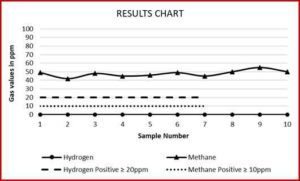 Researchers are commonly finding methane SIBO (small intestinal bacterial overgrowth) is its own kind of intestinal overgrowth. Many are now labeling this condition as IMO, or Intestinal Methanogen Overgrowth, since methanogens that cause methane gas are technically not bacteria, but are part of the Archaea kingdom, and can grow in the colon as well as the small intestine.
Researchers are commonly finding methane SIBO (small intestinal bacterial overgrowth) is its own kind of intestinal overgrowth. Many are now labeling this condition as IMO, or Intestinal Methanogen Overgrowth, since methanogens that cause methane gas are technically not bacteria, but are part of the Archaea kingdom, and can grow in the colon as well as the small intestine.
Methanogens can cause a host of digestive symptoms that often go undiagnosed, or wrongly diagnosed. According to the Functional Gut Health Clinic, both IMO and SIBO can lead to belching, bloating, stomach pain, heartburn, anxiety, fatigue, unexplained weight gain and gas. The most common differentiator between IMO and SIBO is that IMO causes constipation while SIBO causes diarrhea.
One of the most accurate, non-invasive methods of testing patients for both SIBO and IMO is by having patients take a hydrogen and methane breath test. Patients who have symptoms such as constipation often will have high methane production that is present at high levels during the entire length of the test.
According to CDI’s research team, however, patients who show extremely high methane production throughout the entire test, even at baseline, may have nuanced breath testing results.
“Since the methane elevation doesn’t meet the cutoff [due to the extremely high baseline] technically it is not ‘supported for SIBO’ under the North American Consensus. After consultation with our lab team, and further assessment of the patient’s history, many of our providers nevertheless choose to treat these patients as methane producing SIBO patients,” reported Craig Strasnick, president and CEO of CDI.
Continued Strasnick, “Our lab team is dedicated to staying on top of industry research and supporting providers in understanding and interpreting test results including nuanced results like those seen in patients with IMO.”
To order CDI’s hydrogen and methane breath tests for your patients, click here.

